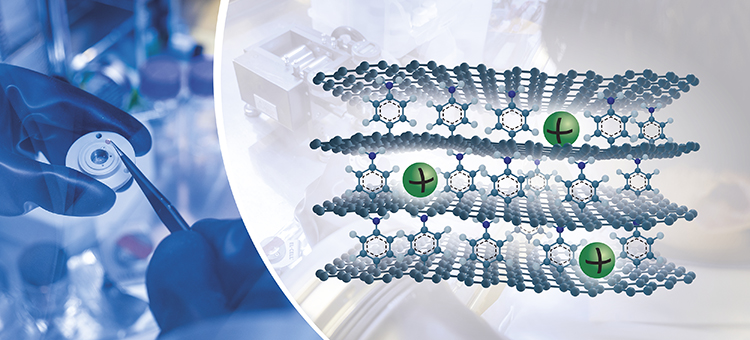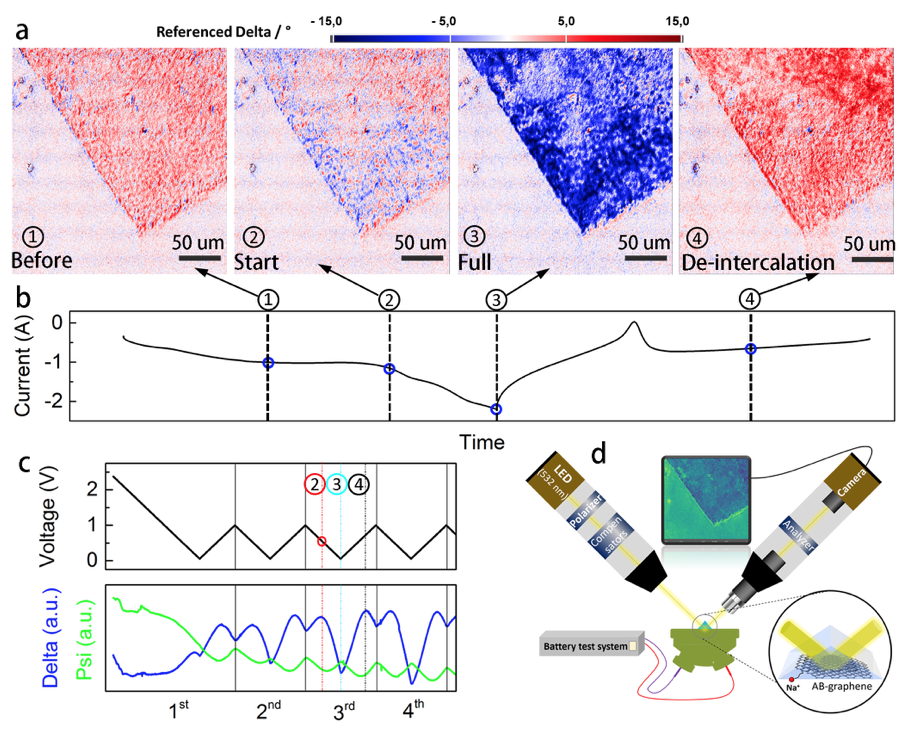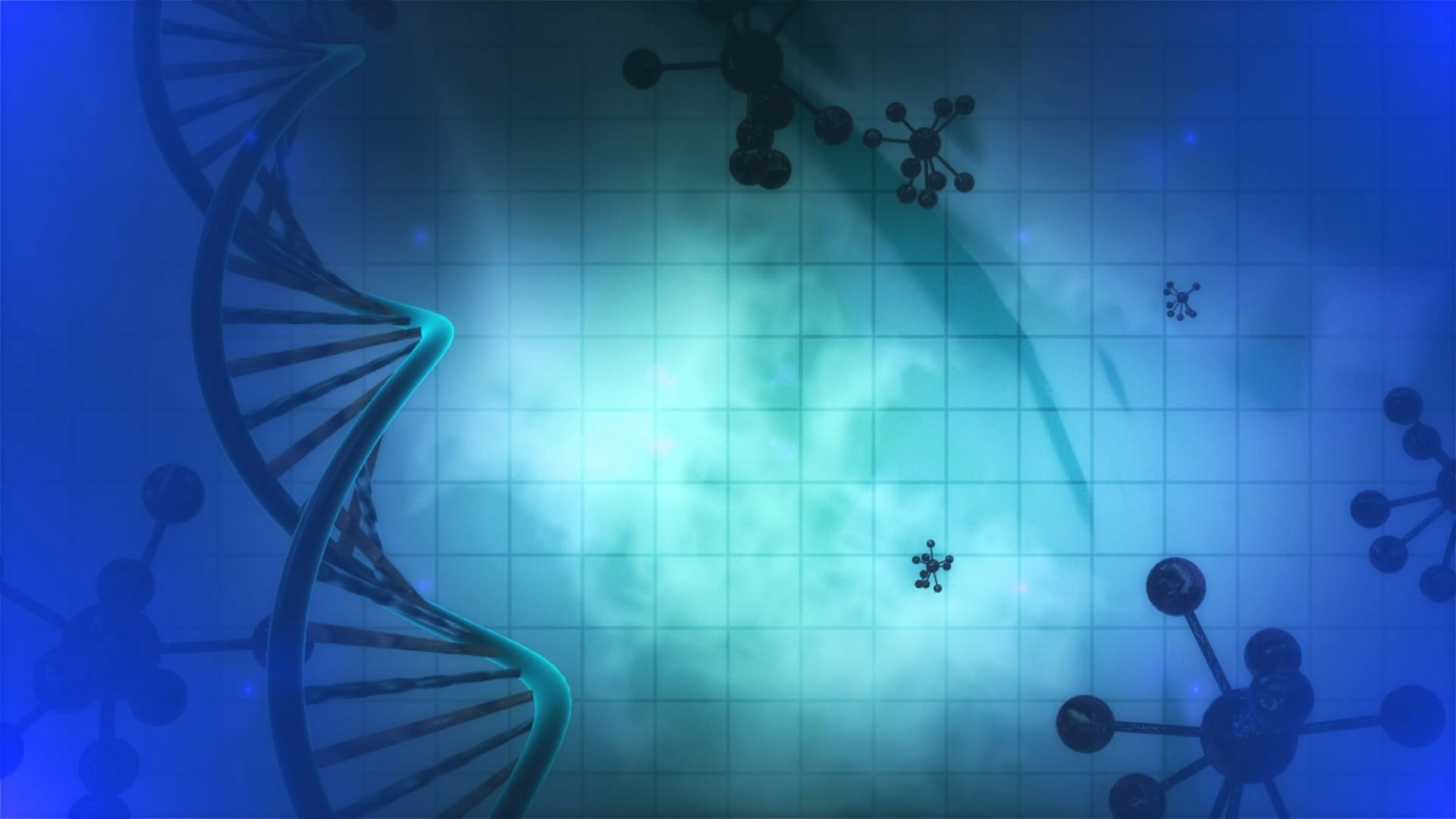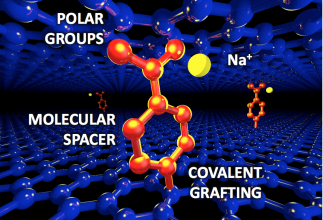Researchers from the university of Chalmers and ISOF have demonstrated a new approach to store energy using cheap, abundant sodium ions.
Most of today’s batteries powering our mobile phones and electric cares are Lithium-ion batteries. Even though lithium ions work well for energy storage, lithium is an expensive metal with concerns regarding its long-term supply and environmental issues.
Sodium, on the other hand, is an abundant low-cost metal, and a main ingredient in seawater (and in kitchen salt). This makes sodium-ion batteries an interesting and sustainable alternative for reducing our need for critical raw materials. However, one major challenge is to increase the capacity.
At the current level of performance, sodium-ion batteries cannot compete with lithium-ion cells. One limiting factor is the graphite, which is composed of stacked layers of graphene, and used as the anode in today’s lithium-ion batteries.
The ions intercalate in the graphite, which means that they can move in and out of the graphene layers and be stored for energy usage. Sodium ions are larger than lithium ions and interact differently. Therefore, they cannot be efficiently stored in the graphite structure. But the Chalmers researchers have come up with a novel way to solve this.

“We have added a molecule spacer on one side of the graphene layer. When the layers are stacked together, the molecule creates larger space between graphene sheets and provides an interaction point, which leads to a significantly higher capacity,”
Jinhua Sun at the Department of Industrial and Materials Science at Chalmers
Ten times the energy capacity of standard graphite
Typically, the capacity of sodium intercalation in standard graphite is about 35 milliampere hours per gram (mA h g-1). This is less than one tenth of the capacity for lithium-ion intercalation in graphite. With the novel graphene the specific capacity for sodium ions is 332 milliampere hours per gram – approaching the value for lithium in graphite. The results also showed full reversibility and high cycling stability.
The entrance and exit of ions into the Janus Graphene could be observed in real time using a novel technique called Imaging Ellipsometry (IES).
It was really exciting when we observed the sodium-ion intercalation with such high capacity. The research is still at an early stage, but the results are very promising. This shows that it’s possible to design graphene layers in an ordered structure that suits sodium-ions, making it comparable to graphite
Professor Aleksandar Matic at the Department of Physics at Chalmers.

“Divine” Janus graphene opens doors to sustainable batteries
The study was initiated by Vincenzo Palermo in his previous role as Vice-Director of the Graphene Flagship, a European Commission-funded project coordinated by Chalmers University of Technology.
The novel graphene has asymmetric chemical functionalisation on opposite faces and is therefore often called Janus graphene, after the two-faced ancient Roman God Janus – the God of new beginnings, associated with doors and gates, and the first steps of a journey. In this case the Janus graphene correlates well with the roman mythology, potentially opening doors to high-capacity sodium-ion batteries.
“Our Janus material is still far from industrial applications, but the new results show that we can engineer the ultrathin graphene sheets – and the tiny space in between them – for high-capacity energy storage. We are very happy to present a concept with cost-efficient, abundant and sustainable metals,”
“Our Janus material is still far from industrial applications, but the new results show that we can engineer the ultrathin graphene sheets – and the tiny space in between them – for high-capacity energy storage. We are very happy to present a concept with cost-efficient, abundant and sustainable metals.”
Says Vincenzo Palermo, corresponding author of this work, director of ISOF and Affiliated Professor at the Department of Industrial and Materials Science at Chalmers.
Link to original Highlight from Chalmers University
Original Article: Real-time imaging of Na+ reversible intercalation in “Janus” graphene stacks for battery applications
SCIENCE ADVANCES • 28 May 2021 • Vol 7, Issue 22 • DOI: 10.1126/sciadv.abf0812
Radio interview to V. Palermo (in Italian).


